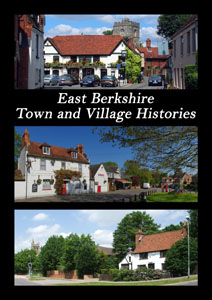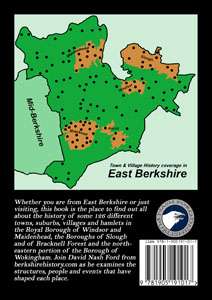 |
 |
||||||||
|
|
Warfield means Weir Field, a fishing place on the Cut, anciently called the How Brook. The Anglo-Saxon manor and church were probably given to the Bishopric of Winchester by Queen Emma, widow of both Kings Aethelred the Unread and Canute the Great. The Bishop may have had a house near the church but his steward probably lived in Wargrave. The old church was replaced by a new building in the 12th century but the two may have been very similar in appearance. The later church was small and narrow with an eastern apse, like similar Anglo-Saxon buildings. It has been greatly enlarged since, mostly in the 15th century, but the old Norman building still remains as the north aisle. Despite being much restored, the present decorated Gothic chancel is one of the medieval delights of all Berkshire churches. It has a much-damaged Easter sepulchre and a superb sedilia, highly decorated with foliage and excellent green men, that runs into the screen and relic chamber behind the altar. It was added, in about 1345, possibly for the great church patron, Sir William Trussell, whose coat-of-arms can be seen in the ancient glass; or perhaps he was just one of a number of contributors. He had lived at Foliejon Park in nearby Winkfield before moving to Shottesbrooke. During this period, the Great Plague took a terrible toll on the parish. Tradition says local people were buried in two plague pits in Hatch Lane. Two parsons certainly died in quick succession in 1350. This chapel has the most fantastic late medieval rood screen complete with its musicians’ loft. It is usually called St Katherine’s or the Staverton Chapel after the family whose memorials can be seen on its floor and walls. They lived at the main manor house in the parish: Heathley Hall at Hayley Green. Today this is called the Moat House. Its basis is a 15th century hall-house and it is still surrounded, as its name suggests, by most of the original moat. The old manor barn stands nearby at Hayley Green Farm. The house may, originally, have been the royal hunting lodge of Warfield Walke, one of the Windsor Forest sub-divisions. It was superseded in Georgian times by Warfield Grove (now Warfield House) across the road. The Rectory House, next to the church, was the home of Sir William James Herschel, the man who discovered fingerprinting. He was the grandson of Sir William Herschel the astronomer. The Cricketers at Hayley Green is one of the better-known spots in the area. This ancient watering hole was always locally known as the Old Orchard House because of the fruit trees which surrounded it. The gamekeepers from Warfield Park are said to have frequented the inn and canny poachers would therefore always know when it was a good time to take to the woods. Nearby Newell Green, or Common, has two pub-restaurants: the Plough and Harrow and the Yorkshire Rose. Not far away is the Queen Anne style Newell Hall that was built around 1700 by the old Warfield family of Horsnaile. They have a road named after them in Bracknell. It was past these buildings that a crowd of villagers passed, in 1874, banging their pots and pans, on the way to give the 2nd Lord Ormathwaite of Warfield Park a taste of ‘rough music’. This was the traditional rural way of showing disapproval to one who had been mistreating his wife. Some four hundred locals gathered outside Warfield Park and banged about with makeshift instruments for several hours. Their ghosts are still sometimes seen on cold autumn nights. Read more history of
Warfield and other settlements in the parish in David Nash Ford's book, 'East Berkshire Town and Village
Histories'.
|
||||||||
| © Nash Ford Publishing 2001; Revised 2020. All Rights Reserved. | |||||||||





